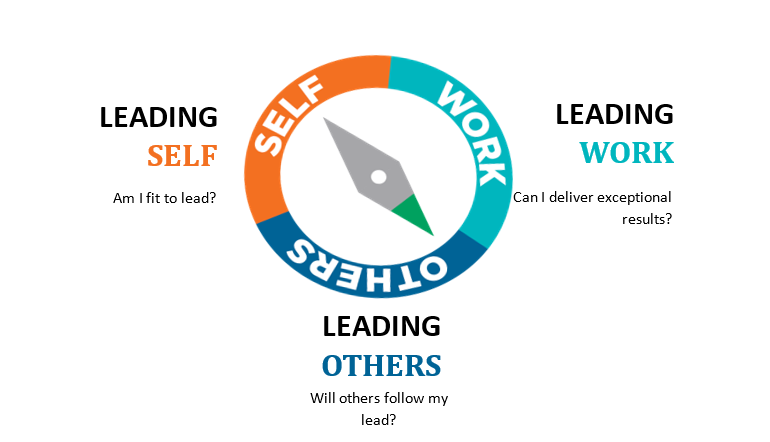Imagine that the organization you work for is charged with developing a leadership training program that was built around the essentials that all leaders must know. What would you include? The list of what we expect leaders to know and do is long and often contradictory. We expect leaders to have a vision and think strategically yet be tactical and operational. And strong and confident yet humble and gracious. Our leaders should want to aggressively grow the organization yet minimize and mitigate risk. We want leaders to be decisive yet inclusive, bold yet calculated, strong yet friendly, firm yet flexible, etc., etc.
What makes it difficult to prioritize what’s most essential to leadership is that we judge our leaders against too many criteria. Plus, what’s essential for a senior leader is probably not the same thing as what’s essential for a new leader. Given that, what would you include in your leadership program?
So What is Essential to Leadership?
For the last 30 years, I’ve been a practitioner of leadership development. In 2002 I founded Giant Leap Consulting, and since that time we’ve developed leadership programs that have been experienced by thousands of leaders across the globe. Many of those programs are multi-year in length, and most are focused on the development of new leaders. The rich participant conversations that emerge during those programs – literally thousands of them – have enhanced our understanding of what’s most essential to leading others.
We believe that there are multiple dimensions to the idea of leadership essentialism. At the highest level, what matters most is a leader’s fitness to lead, and that fitness is expressed in three distinct ways: Leading Yourself, Leading People, and Leading Work. Each type of fitness can be expressed by a question: Do I know who I am as a leader? Will others follow my lead? Can I inspire exceptional results?

Leading Yourself
When it comes to Leading Yourself, what’s essential is that you are self-aware and clearheaded about your strengths and where those strengths can have the most positive impact. Leading Yourself also involves understanding the diminishing returns that the overuse of your strengths is likely to have. All of this requires a deep level of self-exploration, the kind that can be aided by a coach or counselor. Because when you know who you are, you become better able to understand the kinds of people you need to surround yourself with to offset or counterbalance your strengths and limitations. The examined life should lead you to become much more comfortable in your own skin, a reflection of authentic confidence.
Leading Others
Leading Others involves a different focus and different set of skills than Leading Yourself. Before you move into a leadership role, you were likely a strong individual contributor. Your bosses took notice of your productivity and performance and rewarded you by promoting you into a leadership role. But crossing off items on your own to-do list is vastly different than inspiring great performance out of a team. Getting the best out of others requires fostering a psychologically safe environment where people feel free to express themselves and do their best work. It means being more than operationally smart, it means being emotionally intelligent. It also means being emotionally mature and composed, especially on the days when people around you aren’t being those things. As a leader, it means involving people so they feel a high degree of ownership over whatever tasks they are assigned.
Leading Work
Leading Work means mastering business fundamentals such as planning, organizing, staffing, and controlling. It requires being business-minded and taking an interest in industry trends and how they are likely to impact the organization. In addition, leading work involves influencing goals, plans, processes, systems, and metrics in a way that creates efficiencies and optimizes operations.
As mentioned, there’s a lot that goes into being an effective leader. But the ingredients that go into great leadership become easier to organize when divided among the three most essential leadership domains, for example…
Leading Yourself:
- Self-discipline and personal organization
- Work/life balance
- Self-care and wellness
- Personal goal setting and self-accountability
- Professionalism
- Personal courage
Leading Others:
- Employee engagement
- Diversity and inclusion
- Effective communication
- Optimizing conflict
- Performance coaching
- Leading teams / teambuilding
- Influence and persuasion
- Emotional intelligence
Leading Work:
- Business ethics and values
- Visioning and Strategic thinking
- Execution, profitability, & levers of job performance
- Customer relationships, satisfaction, and loyalty
- Entrepreneurship and market development
- Business partnerships and joint ventures
- Managing and calculating risk
The list of topics under each leadership essential will always be long and in flux. But rather than getting overwhelmed by all the topics that leaders need to be trained on, pay more attention to the 3 ways the leaders need to be fit. Because no leader should be expected to be perfect. No leader could possibly live up to all the shifting criteria against which we judge a leader’s effectiveness. But all leaders should be fit to lead. Fit to lead themselves. Fit to lead others. And fit to lead the work.
Bill Treasurer is the founder of Giant Leap Consulting, a courage-building company that has designed, developed, and delivered comprehensive leadership programs to thousands of leaders across the globe. Also, he is the author of six published leadership books, including his newest book Leadership Two Words at a Time. Bill and Giant Leap have worked with such renowned organizations as NASA, eBay, Lenovo, Southern Company, Walsh Construction, Spanx, the Social Security Administration, and the U.S. Department of Veterans Affairs. Giant Leap’s newest program is Bill Treasurer’s Leadership Essentials Academy, a comprehensive, self-paced online leadership program that includes over 65 video lessons, downloadable guides, and advice from leadership luminaries. Learn more here.



